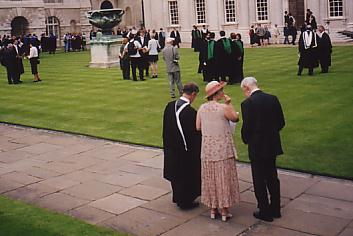About | ECITTT | Conference Programme | Abstracts (2.)
GEOMETRY PROBLEMS AND POSSIBILITIES IN CAE
Dr Geoffrey ButlinCEO of FEGS Ltd
Oakington House
Oakington
Cambridge CB4 5AF
UK
(FEGS now renamed to TranscenData Europe Ltd)
Finite element analysis pre-dates CAD, so only later graduated into CAE. It is not surprising that mesh generation started out bottom-up, with no use of a geometric model. After CAD started to impact, top-down meshing and geometry associativity emerged as a benefit. However, mesh can still get orphaned by adaptivity inside analysis code. Strong APIs promise persistent parentage, but have a way to go.
Heavy investment in CAD geometry has driven the need to re-use it downstream in CAE. It is easier to deliver and sell model transfer for viewing, while 100% automatic transfer for re-use remains illusive. Having 'somewhere to go' when transfer fails is the new appeal.
Irritatingly, but not surprisingly, downstream geometry requirements differ from design requirements. So geometry has to be transformed. Some CAD systems can suppress details and some meshing systems can ignore design details on the fly, but problems of emergent features and persistent parentage reduce benefits. What is really needed is automatic associative defeaturing.
And some geometric functions in CAE remain outstanding, such as automatic spatial decomposition for divide-and-conquer hex meshing and CFD block gridding, shell layering for CFD gridding and automatic dimensional abstraction. Promise here lies in the generic geometry reasoning tool of medial axis computation.
Then with acres of innovative, geometry-based FEA modelling functions, access can still block the benefit. What is needed is a pyramid of software to connect the daunting breadth of possibilities to the narrow vocabulary of any one application.
The author will reflect on 37 years of engaging problems in FEA, meshing and geometry exchange and hint at some possibilities.




















